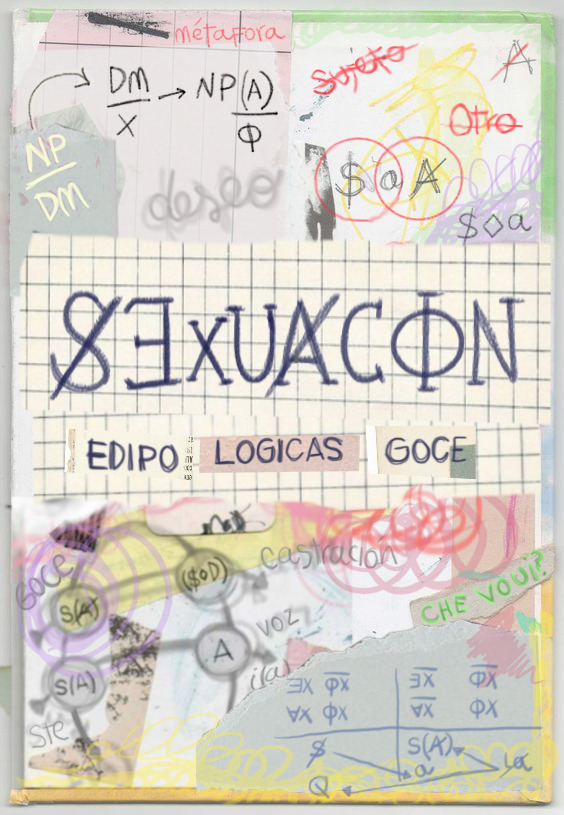Body, era and sexuation
From nomadic jouissance to the impossibility of jouissance
Keywords:
body, sexuation, gender, identificationAbstract
In this work, certain aspects of the body, jouissance and sexuation arepresented, based on references from the gender discourse, establishing acounterpoint with the logic proposed by psychoanalysis. In the case of the firstdiscourse, both sexual identification and the way in which the body is satisfiedare described as the echo of the mark on the body reproduced by sociallyestablished gender practices in a dominant and heteronormative discourse; inthis sense, they indicate that patriarchal power and dominant binarism skew andcondition the gentile fixation leaving jouissance located only in those erogenouszones. On the side of psychoanalysis, it is underlined that both men and womencan only be conceived as signifiers, that is, they are only semblants that can beunderstood as modes of naming themselves that do not say anything about theposition of jouissance; that is why it is not possible to speak of a standard normof a mode of jouissance, and that is what gender discourse does not know. Forpsychoanalysis, unlike gender discourse, structural violence is defined on thebasis of the encounter of the parlêtre with language, which leaves unique markson which will be based varied and contingent encounters with external, social,and family violence, the violence ―which there is― of the immeasurable turnsof the subject in the world.
Downloads
References
Butler, J. (2016). El género en disputa. El feminismo y la subversión de la identidad. Buenos Aires, Argentina: Editorial Paidós.
Diaz, E. (2020). Clítoris nómade. Página 12. Recuperado de:https://www.pagina12.com.ar/281238-clitoris-nomade
Freud, S.⦍2008 (1897)⦎. Carta 69. Freud a Fliess. En Sigmund Freud. Cartas a Wilhelm Fliess (1887-1904). Buenos Aires: Amorrortu editores.
Freud, S. ⦍2011 (1905)⦎. Tres ensayos sobre una teoría sexual. En Obras completas tomo II. Buenos Aires: Biblioteca Nueva, Editorial El Ateneo.
Freud, S. ⦍2011 (1927)⦎. El fetichismo. En Obras completas tomo III. Buenos Aires: Biblioteca Nueva, Editorial El Ateneo.
Lacan, J. (1970). Radiofonía. En Otros escritos. Buenos Aires: Paidós.
Lacan, J. (1973-1974 [2011]). Seminario 20. Aún. Buenos Aires: Paidós.
Lacan, J. ⦍2010 (1975)⦎. Conferencia sobre el síntoma en Ginebra. En Intervenciones y Textos 2. Buenos Aires: Manantial.
Lacan, J. ⦍2015(1975-1976)⦎. Seminario 23. El sinthome. Buenos Aires, Argentina:Paidós.
Laurent, E. (2016). El reverso de la biopolítica. Buenos Aires, Argentina: Grama Ediciones.
Miller, J. A. (2013). Intervención en el Senado Francés. Transformaciones. Buenos Aires, Argentina: Grama Ediciones.
Miller, J. A. (2006). La experiencia en lo real de la cura psicoanalítica. Buenos Aires, Argentina: Paidós.
Preciado, P. B. (2016). Manifiesto contra-sexual. Barcelona, España: Editorial Anagrama.
Preciado, P. B. (2019). La discordia entre los sexos a la luz del psicoanálisis. Mujeres en psicoanálisis. XVIII Jornadas de la École de la Cause Freudienne, París.
Preciado, P. B. (11 de agosto de 2019). “Los cuerpos según Paul B. Preciado.” Página 12. Recuperado de:https://www.pagina12.com.ar/210506-los-cuerpos-segun-paul-b-preciado
Preciado, P. B. (2020, julio). La alegría es una técnica de resistencia. Ñacate.Recuperado de:http://www.revistanacate.com/wp-content/uploads/2020/07/Paul-B.-Preciado.pdf
Downloads
Published
Issue
Section
License
Copyright (c) 2021 Paula Husni

This work is licensed under a Creative Commons Attribution-NonCommercial-ShareAlike 4.0 International License.
Attribution - Non-Commercial - Share Alike (by-nc-sa): No commercial use of the original work or any derivative works is permitted, distribution of which must be under a license equal to that governing the original work.










